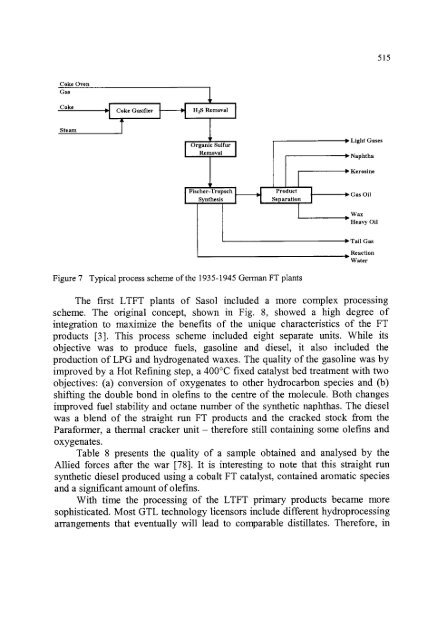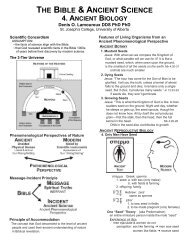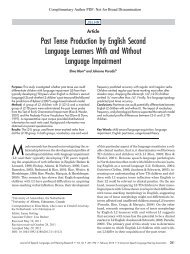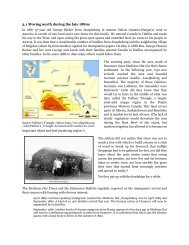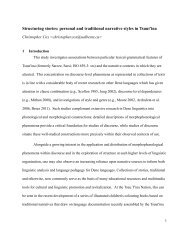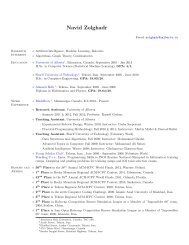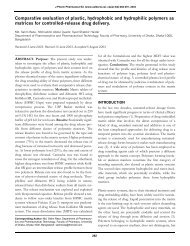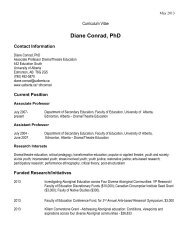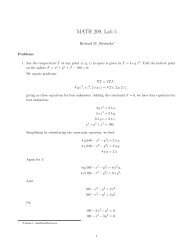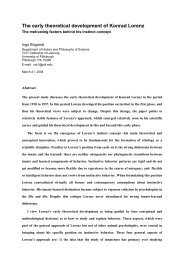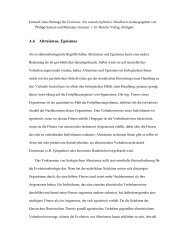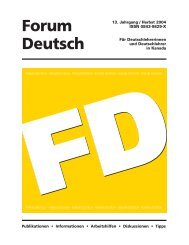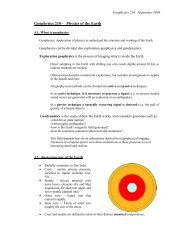Processing of Primary Fischer-Tropsch Products - University of Alberta
Processing of Primary Fischer-Tropsch Products - University of Alberta
Processing of Primary Fischer-Tropsch Products - University of Alberta
You also want an ePaper? Increase the reach of your titles
YUMPU automatically turns print PDFs into web optimized ePapers that Google loves.
Coke Oven<br />
Gas<br />
Coke<br />
Steam<br />
Coke Gasifier HzS Removal<br />
Removal<br />
l <strong>Fischer</strong>-<strong>Tropsch</strong> I<br />
Synthesis I<br />
I<br />
Product<br />
Separation<br />
I<br />
Figure 7 Typical process scheme <strong>of</strong> the 1935-1945 German FT plants<br />
Light Gases<br />
~- Naphtha<br />
Kerosine<br />
Gas Oil<br />
Wax<br />
" Heavy Oil<br />
9 Tail Gas<br />
L Reaction<br />
Water<br />
The first LTFT plants <strong>of</strong> Sasol included a more complex processing<br />
scheme. The original concept, shown in Fig. 8, showed a high degree <strong>of</strong><br />
integration to maximize the benefits <strong>of</strong> the unique characteristics <strong>of</strong> the FT<br />
products [3]. This process scheme included eight separate units. While its<br />
objective was to produce fuels, gasoline and diesel, it also included the<br />
production <strong>of</strong> LPG and hydrogenated waxes. The quality <strong>of</strong> the gasoline was by<br />
improved by a Hot Refining step, a 400~ fixed catalyst bed treatment with two<br />
objectives: (a) conversion <strong>of</strong> oxygenates to other hydrocarbon species and (b)<br />
shifting the double bond in olefins to the centre <strong>of</strong> the molecule. Both changes<br />
improved fuel stability and octane number <strong>of</strong> the synthetic naphthas. The diesel<br />
was a blend <strong>of</strong> the straight run FT products and the cracked stock from the<br />
Paraformer, a thermal cracker unit- therefore still containing some olefins and<br />
oxygenates.<br />
Table 8 presents the quality <strong>of</strong> a sample obtained and analysed by the<br />
Allied forces after the war [78]. It is interesting to note that this straight run<br />
synthetic diesel produced using a cobalt FT catalyst, contained aromatic species<br />
and a significant amount <strong>of</strong> olefins.<br />
With time the processing <strong>of</strong> the LTFT primary products became more<br />
sophisticated. Most GTL technology licensors include different hydroprocessing<br />
arrangements that eventually will lead to comparable distillates. Therefore, in<br />
515


